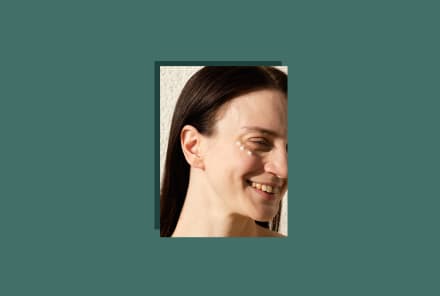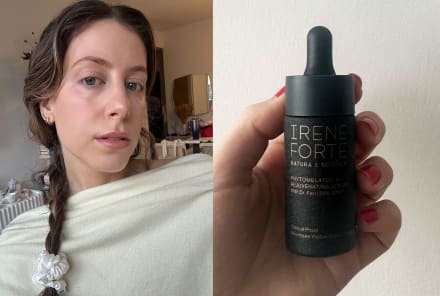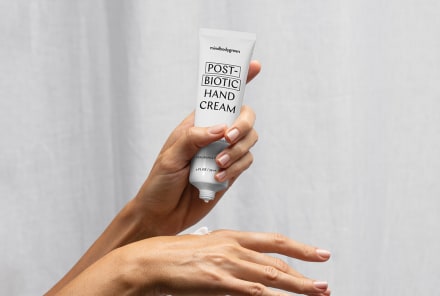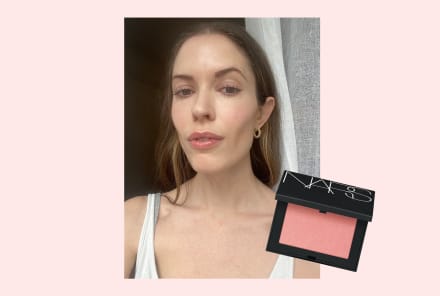Advertisement
How To Get Rid Of Ingrown Hairs: 8 Tips From Dermatologists

The woes of ingrowns, those pesky, inflamed, red bumps. They pop up anywhere from bikini lines and beards to backs and legs—and if you happen to be prone to them, you know how frustrating it can be to treat them. The pimple-like bumps are actually hairs trapped inside their own follicles, and they can start attracting buildup, sebum, and dirt, resulting in an inflamed angry boil. And to remedy it, you may be tempted to reach for the tweezers and tools to do your own extractions, but stop right now. There are safer ways to tend to them that won't leave marks and scars (especially important for delicate areas like the jawline).
Here, we break down the eight steps to identifying them, treating them, and keeping them away for good:
Identify where you are getting them.
Where you get them may help evaluate what's triggering your ingrown. Ingrowns tend to appear anywhere we regularly shave. "When you shave, the free edge of the hair is cut below the surface of the skin. When the free edge of the hair becomes trapped within the skin, it will grow on itself and curl under the skin rather than growing freely to the surface," board-certified dermatologist Joshua Zeichner, M.D., previously explained to us.
The other areas we tend to get them more or are areas where the hair is coarser, be that the beard, bikini region, nape of the neck, or so one. This is because coarser hair can get trapped under the skin easier, as well as create more irritation (therefore, this causes a deeper, more inflamed ingrown that you're more likely to notice).
Identifying where you are more prone to them may help you understand what your next steps are: If you regularly get them in your beard, you may need to evaluate the products you're using that may be triggering the clogged pores in the first place. If you get them at your bikini line, perhaps you need to consider another form of hair removal than shaving.
Understand why you are prone to them.
Here's the thing: Curly hair tends to develop ingrowns more. This is because the hair more likely bends back into the skin, making getting trapped a whole lot easier. So if you have curly hair (on any part of your body) and can't seem to figure out what gives, it may just be something that happens. We say this because, once you realize that certain hair types just do this, you can better be proactive instead of reactive.
Ingrowns, however, can also be the result of repeated wear on a particular area—no matter the hair type. So if you find you get them regularly, and curly hair isn't the explanation, you may need to inspect whether the area is going through repeated irritation like chafing from clothing, masks, sweaty materials, or so on.
Exfoliate regularly.
Part of that proactive bit is by exfoliating regularly. "Exfoliation is the process of removing dead skin cells," board-certified dermatologist Raechele Cochran Gathers, M.D., reminds us in our guide on how often to exfoliate. By removing that top layer of excessive dead skin cells, we lessen the chances of clogging our pores and trapping our hair.
Just be mindful of where you are regularly getting your ingrowns, and find the appropriate scrub for the area: "Body exfoliators shouldn't be used on the face. They are often thicker in consistency and contain higher concentrations of acids and could be too irritating for delicate facial skin," says Cochran Gather. "Likewise, using a facial exfoliation on your body may not be strong enough to give you the results you're looking for."
Use proper tools and technique.
If you suspect your ingrowns are due to shaving (a likely cause), invest in better shaving tools, and take the time to do it correctly.
"Prior to shaving, spend about 10 minutes in warm water to help soften the outer layer of skin, making it easier to remove hair and decreasing the risk of razor burn. It is also helpful to gently and lightly exfoliate with a warm wet washcloth," says board-certified dermatologist Hadley King, M.D. "Shave with a new sharp, clean blade, and change blades frequently. Shave in the direction of hair growth; and use a lubricating shaving gel, cream, or oil; and moisturize afterward. Don't go over the same area more than once."
For guys who frequently get ingrowns around the beards, perhaps opt for an electric razor. "Ingrown hairs can be decreased by not shaving closely," says King. "For example, use an electric razor rather than a blade so that the hair, even at its shortest, is above the skin surface."
Keep things moisturized.
After you shave, you can help prevent irritation or further clogged pores by keeping the area moisturized. A calming lotion is not only good for the overall skin health and condition but can reduce flakes, inflammation, and irritation, which can all lead to clogged pores.
And you don't need to look far for a good hydrator, as there are plenty of all-natural options right in your kitchen.
Spot treatments do wonders.
OK, so let's say you have an ingrown; despite your best efforts to keep it away, you still see a few ingrowns pop up. That's the bad news. The good news is that many can be treated fairly similarly to your garden-variety zit. For smaller, less irritable bumps, you'll find you're almost treating these like a zit. You can start by spot-treating them: Chemical exfoliators, like BHA or AHAs, may be useful. "It helps dry out the angry bump and exfoliate dead cells from the surface of the skin to open the blocked pore," says Zeichner.
You can use a bit of an exfoliating toner, serum, or face wash on the area. Do this regularly until the bump goes away: "Over time this will help to release the hair from beneath the skin," says King.
After the product formula dries, rub on something soothing to help the redness and puffiness go down. If you're looking for a calming body lotion, look for actives like ceramides, colloidal oat, aloe vera, calendula, comfrey, or chamomile. It's important to keep the areas hydrated and nonirritated.
Professional hair removal treatment.
If you are down for in-office treatments, professional hair removal is an option to make sure this problem goes away—and stays away. "The most definitive solution is to get rid of the hair, either by laser hair removal or electrolysis," says King.
Professional hair removal services work by removing the hair, permanently, at the root. However, these can be costly, painful, and time-consuming.
Do not extract.
Just in the same way we tell you to keep your digits off your pimples, do the same here for deep, cyst-like ingrowns. When an ingrown is under the skin, trying to extract it yourself can cause major damage. "This will only increase inflammation, irritation, risk of infection, time for healing, and risk of discoloration and scarring," says King. (Read: Your annoying little ingrown just became a long-term mark you have to deal with.)
It may feel embarrassing to visit a dermatologist or physician for an ingrown hair, especially if it's in a delicate place, but if you can't seem to get rid of the growth no matter what, you'll need professional help. They'll be able to provide topicals, extractions, or other options to help get rid of the ingrown.
The takeaway.
Ingrowns happen—for many reasons. It could be from shaving, irritation, or just naturally from curly strands. Regardless, you'll want to make sure you try your best to prevent them so they don't become irritated and inflamed, which can lead to scarring. But with the right techniques, products, and care, you'll be in the clear.
Watch Next
Enjoy some of our favorite clips from classes
Enjoy some of our favorite clips from classes
What Is Meditation?
Mindfulness/Spirituality | Light Watkins
Box Breathing
Mindfulness/Spirituality | Gwen Dittmar
What Breathwork Can Address
Mindfulness/Spirituality | Gwen Dittmar
The 8 Limbs of Yoga - What is Asana?
Yoga | Caley Alyssa
Two Standing Postures to Open Up Tight Hips
Yoga | Caley Alyssa
How Plants Can Optimize Athletic Performance
Nutrition | Rich Roll
What to Eat Before a Workout
Nutrition | Rich Roll
How Ayurveda Helps Us Navigate Modern Life
Nutrition | Sahara Rose
Messages About Love & Relationships
Love & Relationships | Esther Perel
Love Languages
Love & Relationships | Esther Perel

















